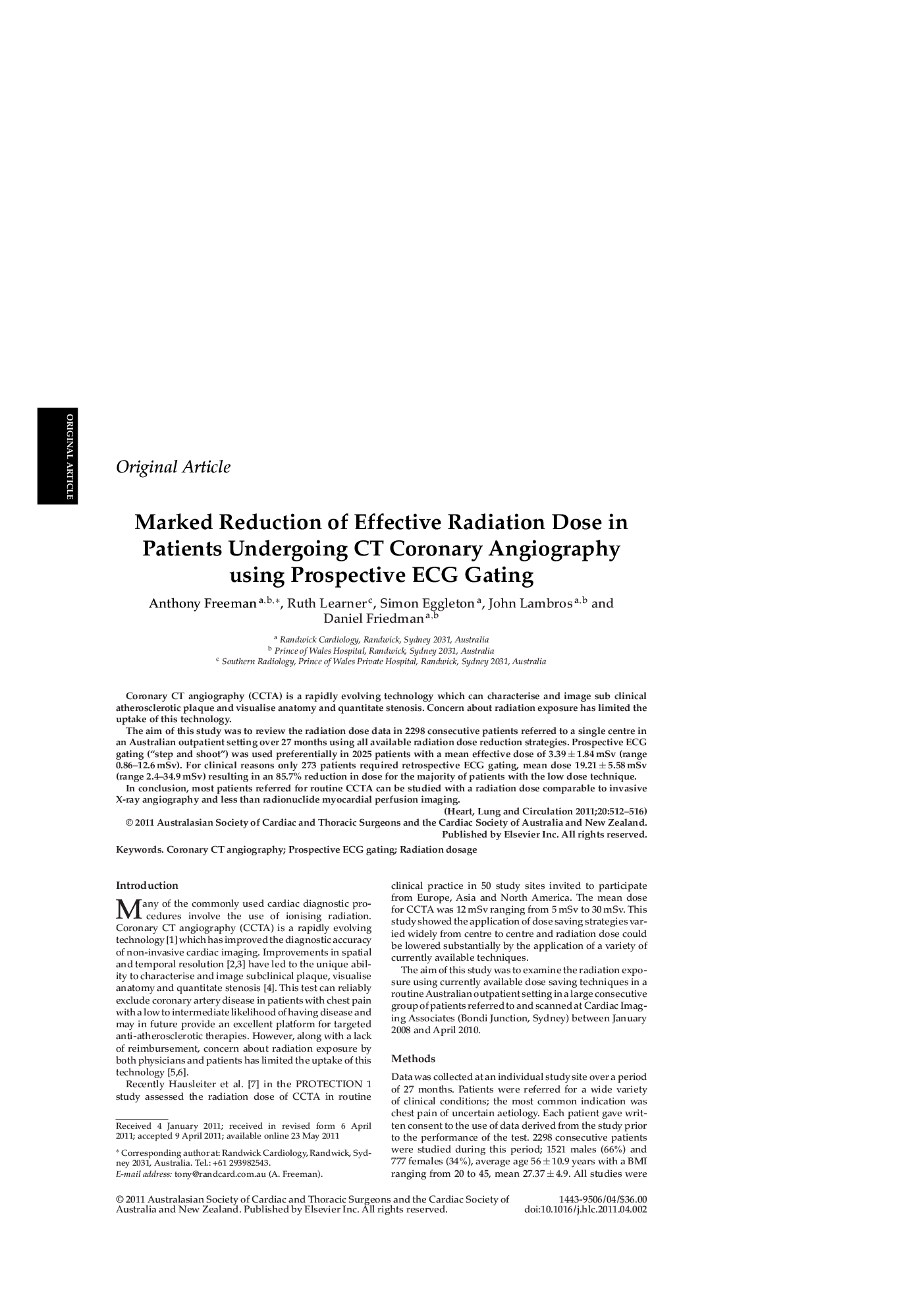| Article ID | Journal | Published Year | Pages | File Type |
|---|---|---|---|---|
| 2919291 | Heart, Lung and Circulation | 2011 | 5 Pages |
Coronary CT angiography (CCTA) is a rapidly evolving technology which can characterise and image sub clinical atherosclerotic plaque and visualise anatomy and quantitate stenosis. Concern about radiation exposure has limited the uptake of this technology.The aim of this study was to review the radiation dose data in 2298 consecutive patients referred to a single centre in an Australian outpatient setting over 27 months using all available radiation dose reduction strategies. Prospective ECG gating (“step and shoot”) was used preferentially in 2025 patients with a mean effective dose of 3.39 ± 1.84 mSv (range 0.86–12.6 mSv). For clinical reasons only 273 patients required retrospective ECG gating, mean dose 19.21 ± 5.58 mSv (range 2.4–34.9 mSv) resulting in an 85.7% reduction in dose for the majority of patients with the low dose technique.In conclusion, most patients referred for routine CCTA can be studied with a radiation dose comparable to invasive X-ray angiography and less than radionuclide myocardial perfusion imaging.
